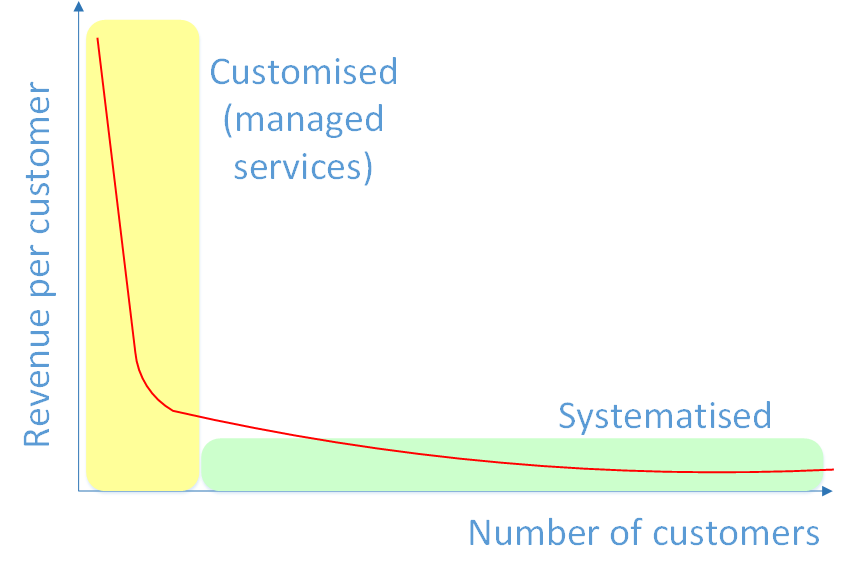9 rainmaker techniques that help to deliver OSS/BSS transformations
If you’re a technologist (eg enterprise architect, developer, BA, tech PM, CTO, etc) who has been tasked with implementing significant technological and business transformation in

The diagram above shows the head and the long tail of OSS, but also the tale of two distinct ways of thinking at some Tier-1 CSPs.
The yellow band represents the head, the top-X (eg Top 100) customers, generally the major corporates, government, etc that spend massive amounts on communication services and expect a corresponding amount of attention from the CSP, usually in the form of managed services.
The green band represents the long tail, the vast number of customers that spend relatively little, but collectively also represent a major source of revenue for CSPs.
These two worlds not only have vastly different levels of support, but often they also have vastly different OSS strategies supporting them. The yellow band often sees customised OSS solutions being built for the biggest of the managed service customers, whilst there tends to be a one-size-fits-all mindset for the green band. [Note that there are generally some OSS/BSS solutions that underpin both sets of customers too such as core billing engines].
Having worked within both of these bands, I have some thoughts I’d like to run past you:
Just as the airline industry dedicate thinking to how to differentiate but assimilate systems / procedures across first, business and economy classes, the OSS industry can also strategise about how to bring coordinated benefits across the four categories listed – from a product and service perspective.
If you’re a technologist (eg enterprise architect, developer, BA, tech PM, CTO, etc) who has been tasked with implementing significant technological and business transformation in
We’ve embarked on a journey of trying to plan for the future of OSS/BSS, not by predicting the future, but by seeking ways to be
Over the years, I’ve often referred to The Corkscrew Analogy or Momentum Spiral to describe a mindset of incremental improvement that’s needed to keep an
We’ve embarked on a journey of trying to plan for the future of OSS/BSS, not by predicting the future, but by seeking ways to be

Here at Passionate About OSS, we are exactly that – Passionate About OSS (Operational Support Systems). We’re also passionate about BSS, NMS, or any other names you call the tools that help to operationalise your network.